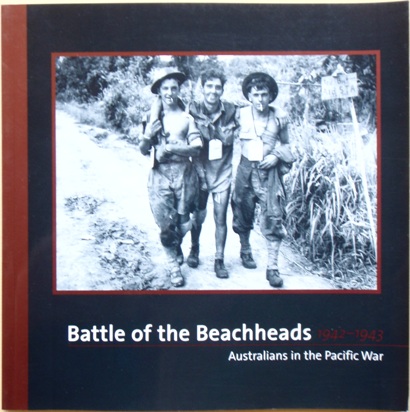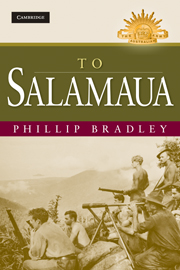Description
Title: Battle of the Beacheads 1942-1943 – Australians in the Pacific War
Author: Moremon, Dr John
Condition: Mint
Edition: 2nd Edition
Publication Date: 2003
ISBN: 1877007188
Cover: Soft Cover without Dust Jacket – 66 pages
Comments: The pictorial account of the Australian involvement in the Battle of Buna–Gona in Papua New Guinea during World War 2
The Battle of Buna–Gona was part of the New Guinea campaign in the Pacific campaign of World War II. On 16 November 1942, Australian and United States forces attacked the main Japanese beachheads in New Guinea, at Buna, Sanananda and Gona. When the Japanese forces were within sight of Port Moresby, the Japanese leadership decided holding Guadalcanal was a higher priority, and they ordered their New Guinea forces to withdraw to the coast. Since arriving on the north coast in June, the Japanese had built hundreds of well-camouflaged, reinforced bunkers in mutually supporting positions blocking all available approaches. Combined with the forces who had returned from the Kokoda Track, the Japanese initially had nearly 5,500 troops on the northern coast. This rose to about 6,500 later in the battle. Both the Japanese and Allied forces were riddled by disease and lacked the most basic supplies, including medicine and food. Some U.S. troops were reduced to a small portion of a C ration each day.
Allied Supreme Commander Douglas MacArthur and his staff received poor intelligence and vastly underestimated the number of defenders and the superior quality of the Japanese defensive system. MacArthur’s chief of staff Lt. Gen. Richard K. Sutherland glibly referred to the Japanese fortifications as “hasty field entrenchments.” The Allies had only a few artillery and mortar pieces and ammunition was so limited it was rationed. No tank or naval support was available, and air support was only partially effective. When the Allies attacked on three fronts, they were immediately stymied by the excellent Japanese defensive position. The Allies suffered heavy casualties and gained virtually no ground.
MacArthur repeatedly expressed his dissatisfaction with the U.S. 32nd Infantry Division’s inability to defeat the Japanese. On 29 November, after 13 days of poor results and high casualties, Lieutenant General Eichelberger relieved Harding of command. Eichelberger’s later assumed command and only then fully appreciated the difficulty faced by the Allies in overcoming the Japanese forces. He learned that the majority of his troops had fevers and were sick with a variety of illnesses including malaria, dengue fever, bush typhus, and tropical dysentery.
The Allied forces only made significant progress when they were finally given the tanks and artillery they had long sought. On 2 January, they captured Buna, and on 22 January 1943, after prolonged intense fighting in extraordinarily difficult conditions, the Allied forces killed or captured almost the entire defending Japanese forces. Only a few hundred escaped to the north. Casualties on both sides were extremely high. General Eichelberger later compared the casualty ratio to the American Civil War. As a percentage of casualties, killed or wounded in action at Buna exceeded the better known Battle of Guadalcanal by a margin of three to one.




